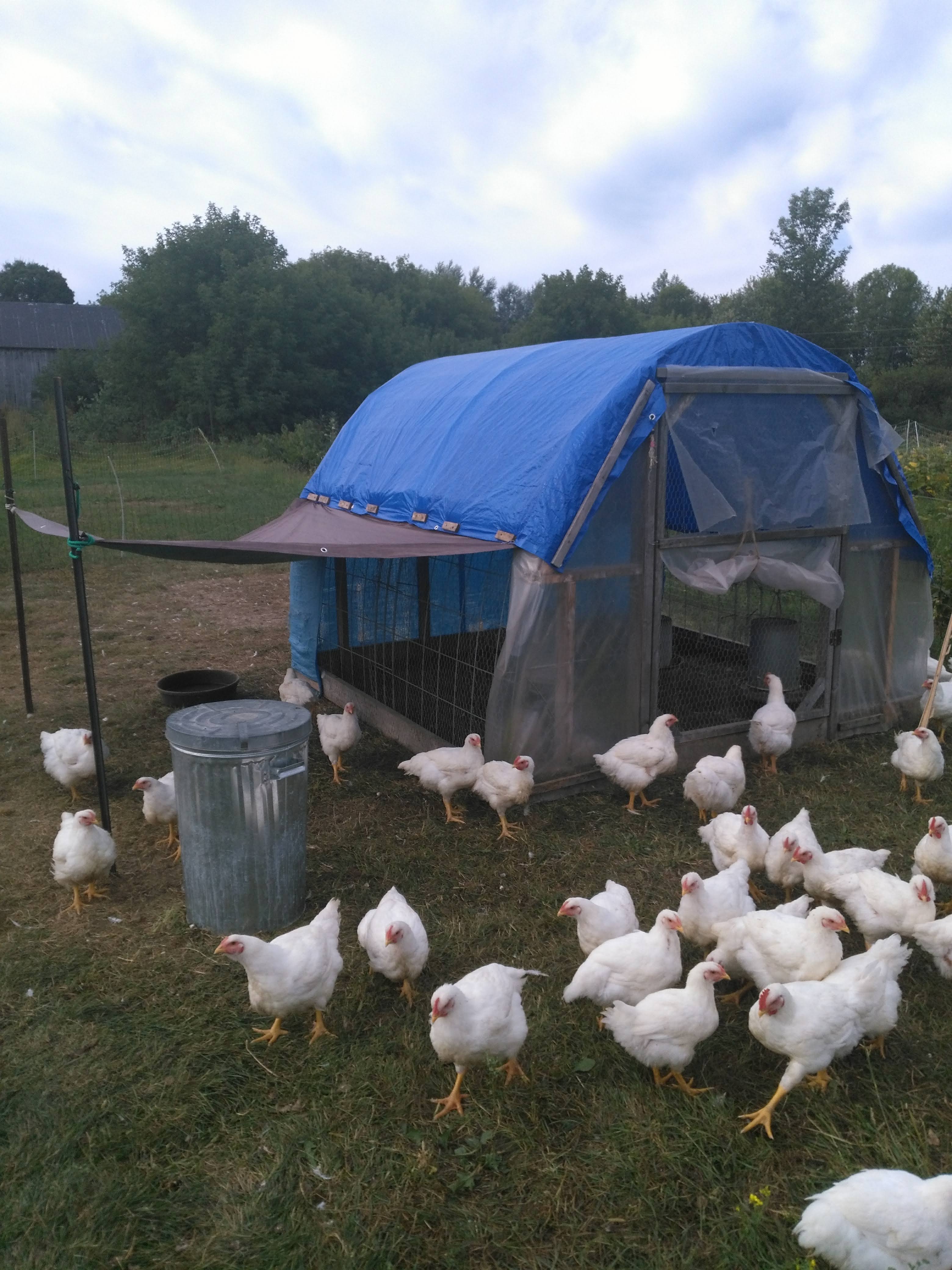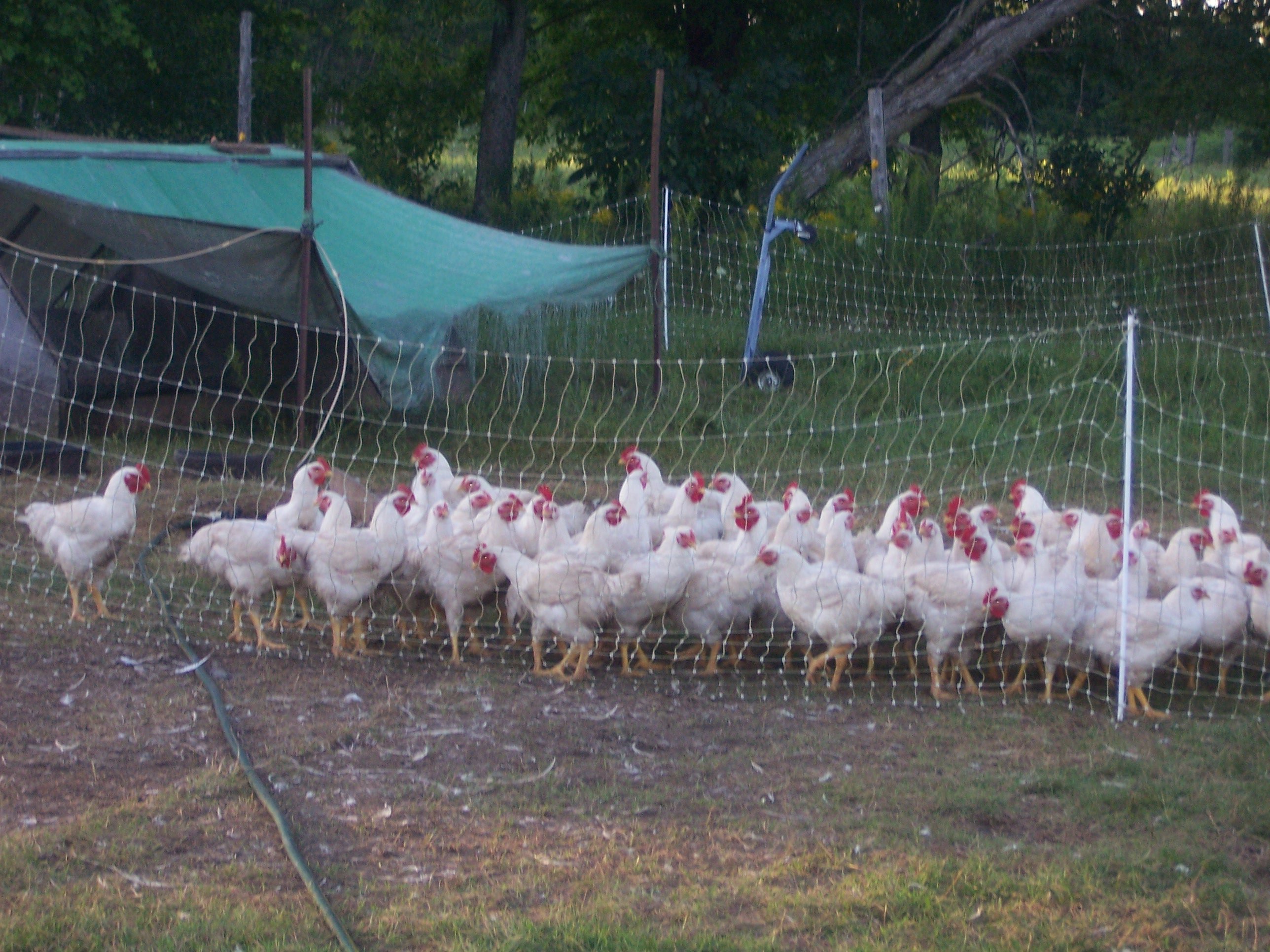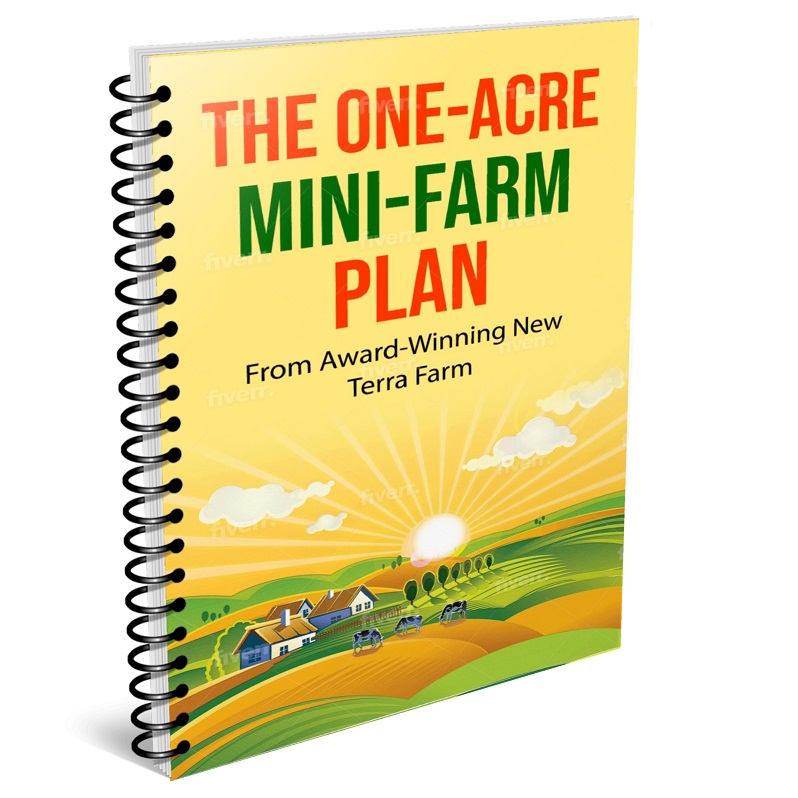Raising Chickens for Meat (and Money) Raising chickens for meat in our day-range coop Raising chickens for meat in our day-range coopRaising chickens for meat is a great sideline business for a small farm. You can fill your freezer with great, naturally-grown food, and put a few dollars in your wallet, too.
On other pages I've written about feeding chickens, chicken coop ideas, and even lessons from the chicken coop. In this article I want to talk about what kind of money you can expect to make raising meat chickens. Here's a breakdown of the expenses and income possible:
FIXED COSTS - These are the costs for equipment that can be reused and amortized over a number of years. Here's what you need:
You can get more information and plans for my two movable coops in my book How to Raise Meat Chickens. Let's use the information above to make a sample budget for a small meat chicken operation, raising 300 meat birds in 'batches' of 100. We are using small batches so that equipment can be re-used as each batch is finished.  We use movable coops and electric mesh fence to protect our meat birds We use movable coops and electric mesh fence to protect our meat birdsRaising Chickens for Meat - Sample BudgetLet's assume we want to raise three batches of 100 meat birds, aiming for a 'market weight' of 5 lbs per bird. Here's how to calculate costs and profits:
Calculating the Fixed Costs. Your fixed costs will vary quite a bit depending on what equipment you use, and if you buy or build your coop, feeders, and broody boxes. I'll use numbers from my records, and you can use the same formula substituting your own figures to calculate your fixed costs.
Total fixed costs: $1475 So, let's run those numbers to create our budget. Assume we can amortize all the equipment over 5 years, and that we will continue to do 3 batches of meat chickens each year. Here's the results:
Total costs per batch of 300 meat chickens = $3,245.
If you want to see raising chickens for meat on a larger scale, check out my friends Ryan and Monica at Merrifield Farms. They are building a pretty good start-up business from their meat chickens. Free MIni-Farm Report FREE - only from New Terra Farm FREE - only from New Terra FarmIntegrating animal husbandry and vegetable crops are critical for a thriving micro-farm. Learn how we raise chickens for meat, pastured pork and operate our organic market garden to the benefit of the animals and the land. Even a small property can produce a lot of food and a decent income. Enter your email address and I'll send you my free Mini-Farm Report. Start planning your own farm enterprise. More Resources for the Small Grower and HomesteaderChapter 14 - Processing Chickens: The Self-Sufficient Backyard Raise chickens, pigs and a productive organic garden: The Homesteader Book Bundle Fresh egg for breakfast (and maybe barter): The Eggs Factory If you need to build it for your homestead, the plans are here: 16,000 Woodworking Plans
|
See something you like? Share!
Recent Articles
-
Learn how much to feed chickens before you bring your birdies home
Oct 29, 25 11:44 AM
You've ordered your birdies, now make sure you understand how much to feed chickens fo a healthy and happy flock -
A Layered Food Storage Plan for Emergency Preparedness
Oct 29, 25 09:48 AM
Build a smart, layered food storage plan for emergencies, prepping, and long-term survival. Discover how to stockpile food the right way for every situation -
How to Learn About Farming For The Wanna-Be Small Grower
Oct 29, 25 09:32 AM
Learn first, earn second. How to learn about farming before you take the big leap into growing crops for money/


